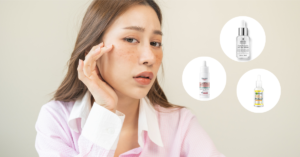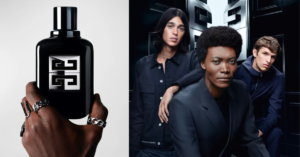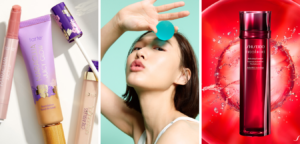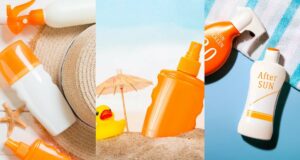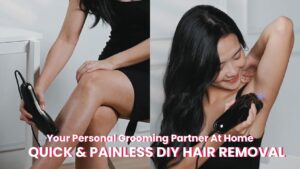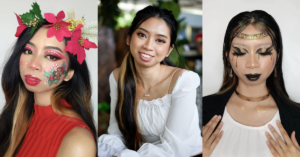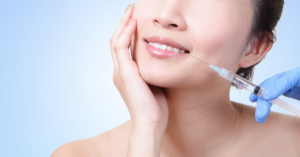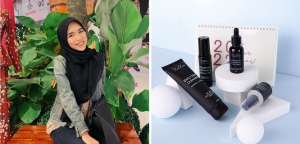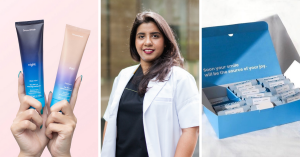#Insider Spotlight
Dr. Ong & Dr. Kirstine of M.A.C Clinic Speak Out on The Evolving Aesthetics Industry and Beauty Standards
In this Women's Month special, Dr. Ong and Dr. Kirstine unveil their thoughts and expertise!
By: Farah Khan / March 24, 2023

Beauty standards have always been evolving, and in recent years, the rise of social media has played a significant role in driving the demand for aesthetic treatments. People today have more access to images of what is considered “beautiful,” and this has led to a growing interest in cosmetic procedures. From non-invasive treatments like injectables and lasers to surgical procedures like facelifts and liposuction, the options for achieving one’s desired look are more varied than ever before. However, with the increase in popularity of these treatments comes a need for greater education and awareness around their potential risks and benefits. In this article, we interview Dr. Kirstine and Dr. Ong from M.A.C Clinic to uncover their thoughts and experiences as women in the beauty industry and how the evolving beauty standards are creating change and expectations.
book now with 
Read: Dr. Hew Talks Taking On The M.A.C Clinic, Malaysia’s Aesthetic Medicine Scene, and MORE!
Contents
The Beginning
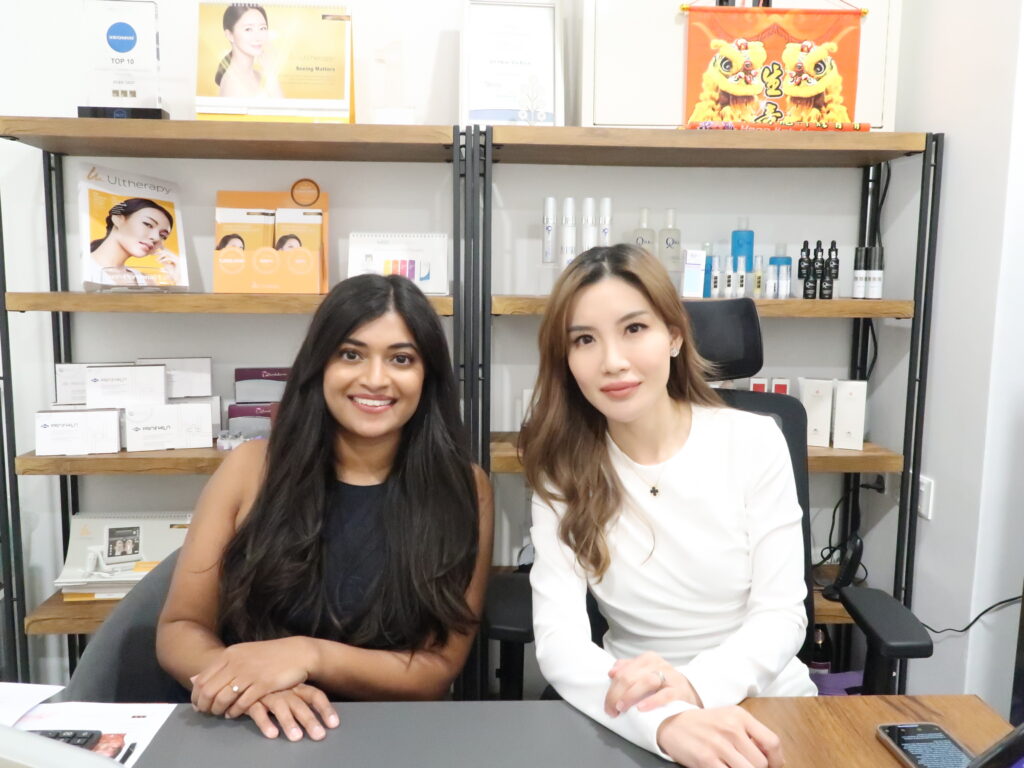
How did you begin your respective careers as aesthetics doctors? What inspired that journey?
[DR. ONG YAN YING] It began during my days as a medical officer in the aesthetics department where I encountered a young college girl who came to me with a skin infection and eczema. At that time, I felt so helpless listening to her tell me stories about how her college mates were expressing their experiences with skincare and makeup, but for her she could not even touch any of those without having an unbearable skin reaction. It was that incident that inspired me to enrol in Post Grad Diploma in Dermatology which was where I was exposed and became interested in aesthetic medicine. My interests simply began to grow from there.
[DR. KIRSTINE ANDREW-LIM] Interestingly enough for me, it began when I was training in England. A friend of mine who was a dentist, invited me to Harley Street in London to attend an aesthetics medicine course. In that world I was exposed to an environment in which doctors were placed in a pivotal position to then impact a patient’s physical appearance that had a huge role in their confidence. Later that year unfortunately, I also suffered from severe cystic acne which I have never experienced before. That was a horrendous experience for me where I suffered from painful breakouts, scarring, and hyperpigmentation. I realised I never want anyone to suffer from the same experience. It impacted my self confidence to the core where I did not even want to leave my house. I felt so helpless and it was a struggle to find a doctor to help me. Hence, I was motivated to be that doctor that will help people who experience what I had once before.
Inclusivity and Representation in The Industry
How have you seen the field of aesthetic medicine change in terms of inclusivity and representation of women?
[DR. ONG YAN YING] In Malaysia I believe the field of aesthetic medicine is dominated primarily by women-both as doctors and patients. There are few pioneer male doctors but there are equal numbers of female doctors too. I would say all of them are equally doing quite well. With social media, I see myself how there is an increase like never before or women from the younger generation looking for aesthetic treatments which is quite an interesting trend.
[DR. KIRSTINE ANDREW-LIM] Personally, I believe the aesthetic industry has changed drastically in the past decade especially so with the rapid use and advancement of technology and social media influence. Now there is a greater recognition of diverse beauty standards, there is no one size fits all. It lands with a greater emphasis on tailored personalised beauty care. There is now a rising trend towards non-invasive treatments. Hence, patients who were once hesitant towards aesthetic treatments are now more open to exploring it. As Dr. Ong mentioned the industry is dominated by women however now, there are more women in positions of leadership and KOLs alike.
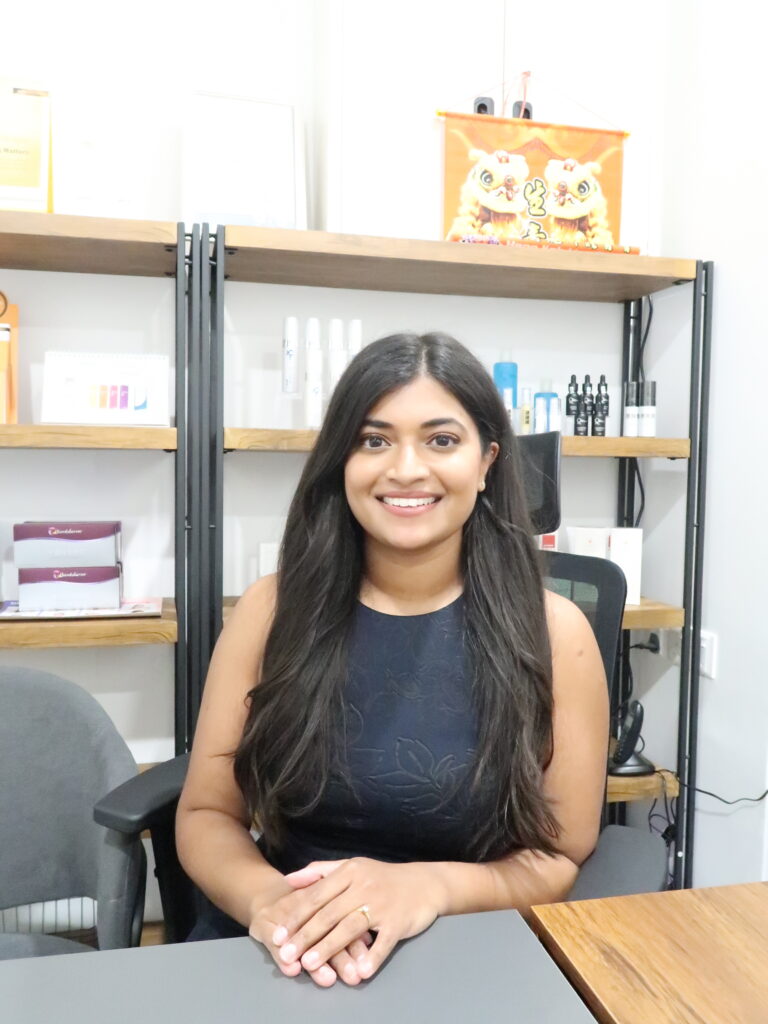
Balancing Expectations and Ethical Practices
How do you balance patient expectations with ethical practices when it comes to cosmetic procedures?
[DR. ONG YAN YING] I would say for doctors, it is one of the biggest challenges to balance patient expectations with our ethical duties, especially as beauty is so subjective. As a trained doctor however, patients’ safety is my number one priority. It is very important to ensure that each patient understands the treatment journey in order to achieve their goals. This also includes informing them of the potential risks, how to deal with them, while not overpromising and guiding them in the right direction or to the right treatment. I believe we should be the person to guide them and tell them when is the right time to stop.
[DR. KIRSTINE ANDREW-LIM] What we’re seeing now in the Malaysian aesthetic industry is the up and coming of many aesthetic clinics. I think the danger and temptation there is that patients could be viewed as a number or a means to achieve your KPI. What’s really important is to see each person that walks through the door as an individual, seeing their struggles. It is in the art of listening to them, understanding their motivations for seeking treatment, and coming up with a patient centric approach to care. It is also important to take into account their patients’ financial affordability. It is not a one size fits all approach, it is not about upselling them the most expensive treatment there is. The patients’ safety and best interest comes first, always.
Common Misconceptions About Aesthetic Treatments

Can you share some of the common misconceptions about cosmetic treatments that you have encountered in your practice?
[DR. ONG YAN YING] Many would think that aesthetic treatments are about changing the way you look which I completely disagree. My goal as an aesthetic doctor is to improve and enhance one’s natural looks without going overboard or making patients look unnatural. I prefer to take the conservative approach where I take baby steps in improving their appearances in order to make people look and feel best in their own skin.
[DR. KIRSTINE ANDREW-LIM] One common misconception surrounds the permanence of these aesthetic treatments, believing that once the treatment is done it can be drastic, deforming, and scarring changes which creates fear especially in the patient demographic who are looking for more subtle changes to their looks. Another misconception surrounds the safety of the products and treatments. At M.A.C Clinic we use only regulated professional equipments and products held to award winning international standards, ensuring the highest quality of care. As an aesthetics doctor, I make sure to be curious about my patients, to listen to them, and take the opportunity to debunk any of these misconceptions, and guide them in the right direction.
The Individual Approach
How do you approach the individual needs and concerns of your female patients when developing a treatment plan?
[DR. ONG YAN YING] I usually would ask my patients about the goals and what they would like to achieve by seeing me. I spend a significant amount of quality time to fully understand their priority which is important to ensure I can develop a proper treatment plan that is fit for their individual needs and expectations.
[DR. KIRSTINE ANDREW-LIM] There is one skill that I hold in very high regard which is to be curious and to apply a patient centric approach to my practice. Learning about and listening to my patients, having a deeper understanding about their insecurities, reasons behind their goals, expected outcomes, financial capabilities are all taken into consideration when I tailor their treatment.
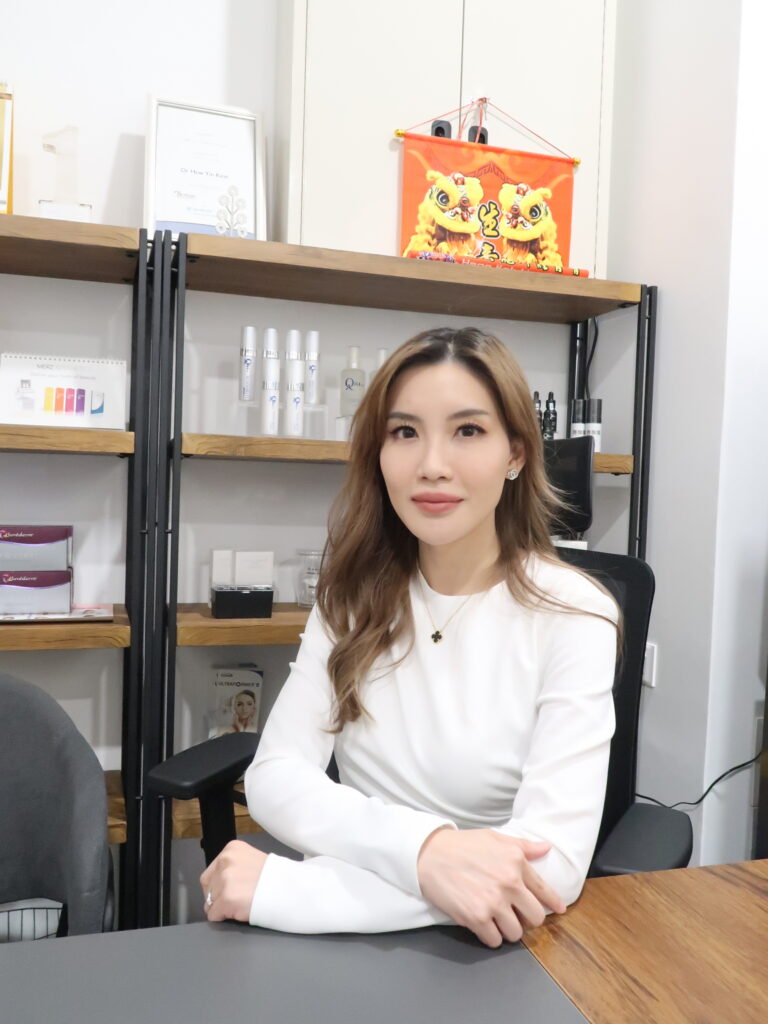
Media’s Portrayal of Beauty Standards
In what ways do you think the media’s portrayal of beauty standards affects women’s decisions to pursue cosmetic treatments?
[DR. ONG YAN YING] I believe there are both positive and negative impacts of these beauty standards. I would say that we have always been exposed to perfectionism on social media from influencers and celebrities. Truth be told, even the biggest models and influencers have their own downtime and their lives are much more challenging with the spotlight constantly shining on every aspect of their day to day lives. They have their bad days too and it is a lot of pressure on them as well. It is our responsibility as aesthetic doctors to guide our patients to understand that perfection does not exist. All we need to do is feel good and enhance your natural beauty without changing your whole face to look like someone else or to fit unrealistic beauty standards.
[DR. KIRSTINE ANDREW-LIM] Historically, beauty standards have been influenced by culture, society, and economic factors. It has varied across time periods, and regions. With the rise of social media and the increasing influence of celebrities and KOLs, there is a growing emphasis on achieving an unattainable perfect appearance. As a result this leads many women to pursue cosmetic treatments that could be dangerous to their health and well being. There are, however, positive signs of change in many forms of media, there is progress towards more inclusive and diverse beauty standards. The body positivity movement which aims to promote self acceptance and challenge societal beauty norms has gained significant traction in the last few years as well.
Empowering Patients

How do you ensure that your patients feel empowered and informed about the risks and benefits of cosmetic procedures before undergoing treatment?
[DR. ONG YAN YING] As I mentioned earlier, I spend a good amount of time understanding the patient better during consultation. Before starting any treatment, I would lay down a plan which involves step by step procedures which includes giving them a heads up on potential risks – not to scare them, but to empower them to make their own informed decisions towards their own face and body. The final decision is in the hands of the patients and aesthetics doctors merely provide suggestions and steer them in the right directions.
[DR. KIRSTINE ANDREW-LIM] I believe that communication is key here. It is about translating your knowledge as a medical practitioner and your experience into something that the patient can understand and absorb. It is a lot about listening, it is an art, it is a delicate balance, a give and take and it comes down to being curious and understanding your patient. Often patients would come in with an image of what they want to look like, but when you actually spend time with them you come to realise that these patients are quite sensible and they know what is achievable. It can all be revealed through a good time spent to understand each patient that comes through our doors.
The Role of Self Care and Self Love
Can you speak to the role of self-care and self-love in cosmetic treatments and aesthetic medicine?
[DR. ONG YAN YING] I feel like self care and self love are often used interchangeably. The fact that you have the want to improve the way you look and feel is already part of self care and self love. I think it speaks to itself, self care and self love is when you are brave enough to put yourself out there and admit to your insecurities and seek healthy and safe means of improvement whether it’s through aesthetic treatments or other means. As an aesthetics doctor, being able to make people feel more confident is my motivation that keeps pushing me to improve my knowledge and techniques which is my personal form of self love and self care.
[DR. KIRSTINE ANDREW-LIM] I think this is a great question that leads you to think about the deeper meaning of these two terms. Self care involves taking action to maintain your physical, mental, and emotional well being. In the context of aesthetic medicine, self care may involve seeking treatments that address aesthetic concerns as a way of improving your self esteem and overall well being. Self care can be an important part of overall self love and self acceptance. Self love on the other hand, involves accepting yourself unconditionally, it does not rely on external factors. Self care can play an important role in achieving self love. It is important to ensure that the treatments that we provide are not used to chase perfection. At the end of the day it is important for all of us to accept us for who we are, flaws and all.
As female aesthetic doctors, how do you feel your work empowers women to feel more confident and comfortable in their own skin?

[DR. ONG YAN YING] Being an aesthetic doctor, who is also a woman, I feel very privileged to be in this position to be able to serve and deliver confidence directly to them. It is always very challenging for women to always be expected to look good and be in their best physical state despite having to juggle many roles. With cosmetic procedures, it creates many possibilities that skincare might not be able to achieve. You don’t even need to go under the knife as there are now many minimally invasive treatments.
[DR. KIRSTINE ANDREW-LIM] It came to a shock to many people around me when I transitioned into the aesthetic medicine field as I came from a background of surgery. I feel very privileged being where I am. I feel that I am in a position of power to change people’s perception of what aesthetic medicine really is. With people being more open to having a conversation about aesthetic treatments now, I am in a good position to debunk a lot of misconceptions and break many taboos surrounding cosmetic procedures like Botox, fillers which a decade ago would send shock waves throughout your community.
Advice For Women In Aesthetics
What advice would you give to women who are interested in pursuing a career in aesthetic medicine or any male-dominated field, and how can they promote gender equality in the industry?
[DR. ONG YAN YING] My one advice is to not let your gender define who you are, do not let it hold you back from pursuing your goals. Your skills, experience, and your work is what truly matters. Whether your interests are in a male or female dominated field, that should not deter you from going for it, especially not in this day and age.
[DR. KIRSTINE ANDREW-LIM] My tip would be to embrace your unique strengths. Use your unique perspective as a woman to achieve your goals. Stand up for change because male or female, we deserve equal opportunities. Be strong, and practise what you preach.


